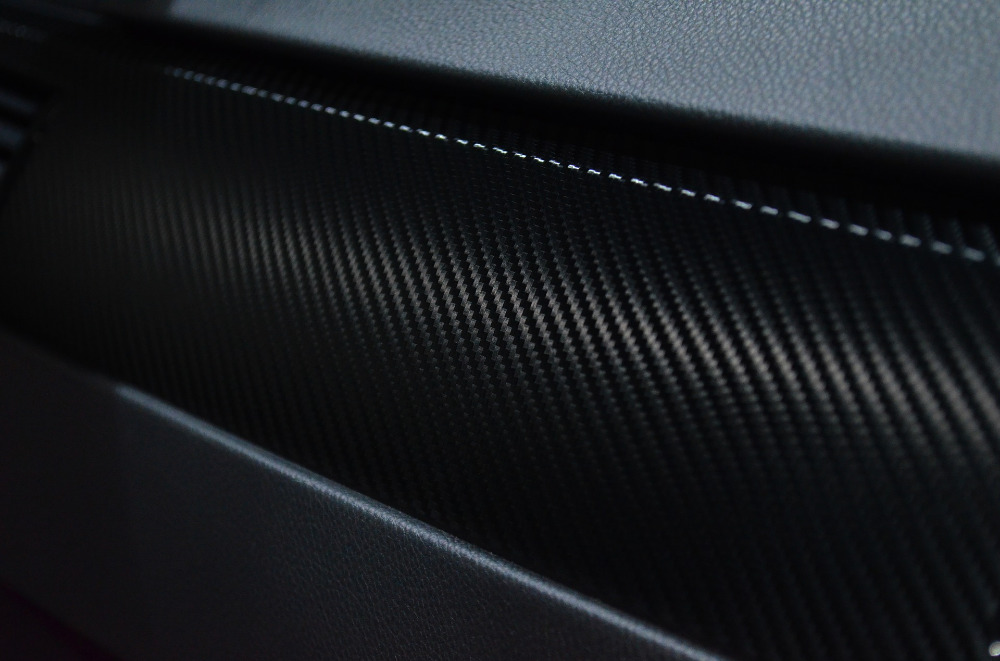Carbon fibre: the bittersweet wonder material
There is no denying that carbon fibre is a revolutionary material, but there are also challenges to consider…
The use of carbon fibre has been pivotal in the development of many industries, from aeronautics to motorsport, enabling pioneering feats such as the Maclaren MP4/1 and Boeings’ 787 Dreamliner. In the superyacht industry, the composite material has facilitated a wealth of innovative developments including the DynaRig, high-performance race yachts and even furniture. But what are the real benefits of this so-called ‘wonder material’?
Notable initial applications of the material include the McLaren MP4/1 in the 1980s – the first car to feature a monocoque design wholly constructed in carbon fibre composite. Its application revolutionised Formula One car design offering unprecedented levels of rigidity, weight reduction and driver protection. In the superyacht industry, a number of shipyards and tender manufacturers have used the material in the name of performance, with notable projects including S/Y Pink Gin VI, S/Y Comanche and 49m Khalilah.
There is no denying that carbon fibre has been a revolutionary material for the superyacht industry, but there are also challenges to consider.
Having created the largest carbon fibre sloop in the world, 54m S/Y Pink Gin VI, Finnish shipyard Baltic Yachts is one builder focused on superyacht construction through the use of advanced composites. “Weight is the enemy of performance, so from the outset we knew lightweight, versatile carbon composites were ideal for yacht building,” is the builder’s ethos. “Advanced composites have become the materials of choice for construction, making our yachts lighter, stiffer and faster. We not only seek performance from our yachts, but also want them to be innovative, making them easier, safer and more exciting to sail.”
Magma Structures specialises in the development, design, manufacture and testing of innovative free-standing yacht masts and Dyna-Rig systems. Referring to its application and development of the Maltese Falcon’s DynaRig, Magma Structures states that, “The high strength, lightweight and fatigue-resistant nature of modern advanced materials (carbon fibre) has been the key enabler”. The free-standing carbon spars stand 200ft tall and support nearly the same bending moment as the wings on a 767.
According to the Composites Market Report 2018, the global demand for carbon fibre is on the rise, with an 11 per cent annual growth year on year.
There is no denying that carbon fibre has been a revolutionary material for the superyacht industry, but there are also challenges to consider. Carbon fibre is costly, intensive to produce and very difficult to recycle. A report conducted by the Green Alliance in 2017 suggested that carbon fibre is among the “novel materials [that] risk disrupting the [circular economy] system and creating a new generation of products destined for landfill”.
According to the Composites Market Report 2018, the global demand for carbon fibre is on the rise, with an 11 per cent annual growth year on year, a figure that is predicted to grow exponentially between now and 2022. With this in mind, recycling options for carbon fibre has never been so important as the circular economy concept continues to gain momentum and become a core focus of the superyacht industry.
Thankfully, end of life options for composite materials are becoming an increasingly viable option, aiming to elevate the inevitability of carbon fibre ending up in landfill sites. British company ELG Carbon Fibre is the largest carbon fibre recovery plant, optimising a reclaiming process for carbon fibre, while aiming to industrialise the conversion technologies to manufacture recycled carbon fibre products that can be reintroduced to the composites and compounding industries.
For the superyacht industry, this is an important option as the use of carbon fibre continues to rise. The benefits of the material, of course, offer reductions in weight, thus reducing energy consumption on yachts as a result. But, every construction and engineering industry needs to be aware of the repercussions of carbon fibre if there are to be pivotal developments in recycling the material.
The benefits of the material, of course, offer reductions in weight, thus reducing energy consumption on yachts as a result. But, every construction and engineering industry needs to be aware of the repercussions of carbon fibre if there are to be pivotal developments in recycling the material.
An example of the circular economy in action, Land Rover BAR (Ben Ainslie Racing) is working to significantly increase the application of recycled composite materials. Through a partnership with ELG Carbon Fibre, Land Rover BAR aims to ensure that the carbon fibre process waste and end-of-use components from the team are recycled as far as possible to promote the most economic and environmentally efficient use of the material.
Awareness is on the rise, and thankfully industries are responding with recycling options arriving around the world, including ELG Carbon Fibre in the UK, CFK Valley Stade Recycling in Germany and Carbon Conversions in the US. There is no denying that carbon fibre is a wonder material, but its bittersweet nature is one that hasn’t gone unnoticed and thankfully is being managed and worked on accordingly.
Profile links
NEW: Sign up for SuperyachtNewsweek!
Get the latest weekly news, in-depth reports, intelligence, and strategic insights, delivered directly from The Superyacht Group's editors and market analysts.
Stay at the forefront of the superyacht industry with SuperyachtNewsweek
Click here to become part of The Superyacht Group community, and join us in our mission to make this industry accessible to all, and prosperous for the long-term. We are offering access to the superyacht industry’s most comprehensive and longstanding archive of business-critical information, as well as a comprehensive, real-time superyacht fleet database, for just £10 per month, because we are One Industry with One Mission. Sign up here.
Related news

Sustainability and responsibility
Exploring the challenges the superyacht industry is facing to achieve its ambitious sustainability goals
Business

Google’s camp on climate change confirms many of our fears
Did the meeting of the minds to discuss the global climate emergency end up doing more harm than good
Owner

Sustainability and the categorical imperative
Has the superyacht industry's approach to sustainability, at times, been wrong?
Business
Related news
Sustainability and responsibility
6 years ago
Sustainability and the categorical imperative
6 years ago
NEW: Sign up for
SuperyachtNewsweek!
Get the latest weekly news, in-depth reports, intelligence, and strategic insights, delivered directly from The Superyacht Group's editors and market analysts.
Stay at the forefront of the superyacht industry with SuperyachtNewsweek




